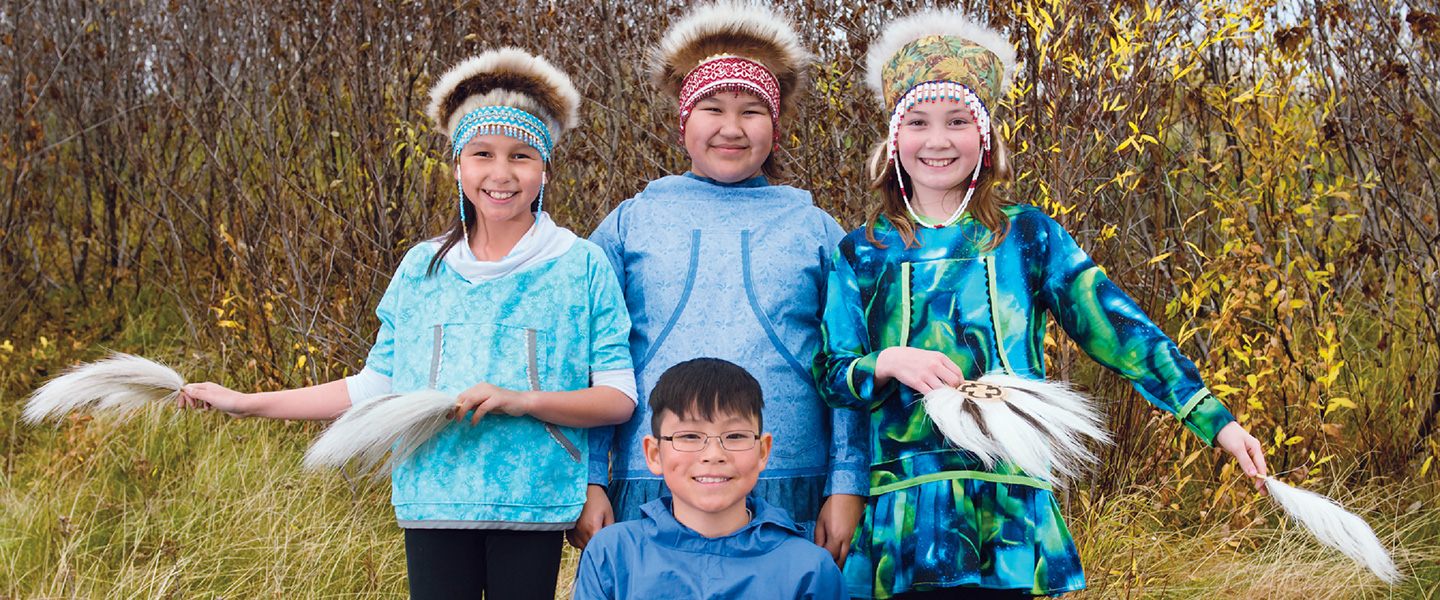Katie Basile Photography
Ikusek Nicolai performs a traditional Yup’ik dance with fans made of feathers.
Like most kids, Ikusek Nicolai learns math, reading, and science in school. But her music class is probably not what you’d expect. Ikusek and her classmates sing in a language most people don’t understand. During each song, some students dance while others play drums.
“Sometimes it gets very loud when everyone is singing and drumming, but it’s fun,” says Ikusek, who’s in third grade. “I like to dance with the younger kids because I get to teach them the moves.”
But this class isn’t just for fun. It’s part of an effort to save a dying language. Students at the school in Bethel, Alaska, are taught in Yup’ik, the language their ancestors spoke.
Yup’ik is one of 20 Native Alaskan languages in danger of disappearing by the end of this century. The mission of Ikusek’s school is to prevent that from happening.
“The best way to save a language is to teach the young people,” says Roy Mitchell. He is an expert on Alaska’s indigenous, or native, languages.
Like most kids, Ikusek Nicolai learns math, reading, and science in school. But her music class is probably not what you’d expect. Ikusek and her classmates sing in a language most people don’t understand. During each song, some students dance while others play drums.
“Sometimes it gets very loud when everyone is singing and drumming, but it’s fun,” says Ikusek. She’s in third grade. “I like to dance with the younger kids because I get to teach them the moves.”
But this class isn’t just for fun. It’s part of an effort to save a dying language. Students at the school in Bethel, Alaska, are taught in Yup’ik. That’s the language their ancestors spoke.
Yup’ik is one of 20 Native Alaskan languages in danger of disappearing by the end of this century. Ikusek’s school has a mission to prevent that from happening.
“The best way to save a language is to teach the young people,” says Roy Mitchell. He is an expert on Alaska’s indigenous, or native, languages.

